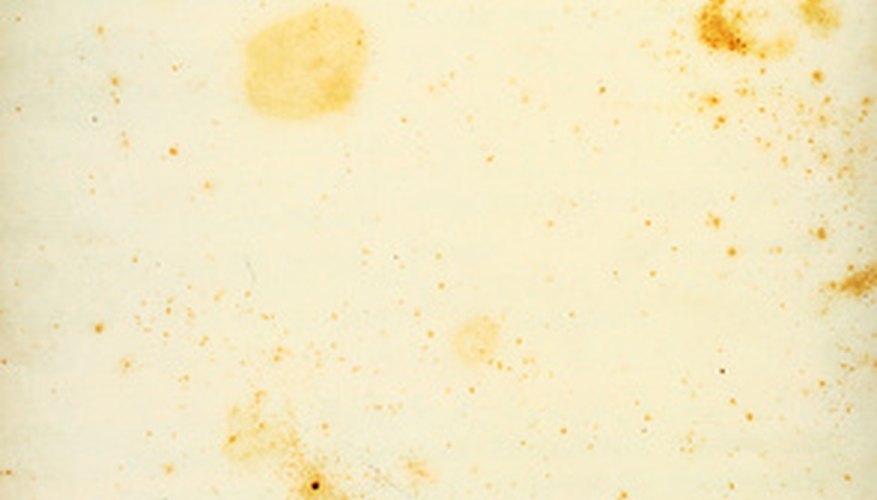Chlorine stains are annoyingly yellow in nature and can be very unsightly. Chlorine often works as the base in many bleaches and cleansers.
- Chlorine stains are annoyingly yellow in nature and can be very unsightly.
However, excessive use can lead to stains in the form of patches on clothes, car seats, carpets and the like.
Getting the stains out is not always a simple procedure. However, a few methods are worth a try before giving up on the fabric.
Use sodium thiosulphate (photographic fixer) for a stain that is new or is just beginning. Dip a clean, absorbent cloth in sodium thiosulphate.
Look for sodium thiosulphate at your local water treatment supply, aquarium treatment supply or film developing supply store. Alternately, you could order it from the resource below. It may also be referred to as "Dechlor."
Blot the stain thoroughly with the cloth. Keep doing this until either the stain disappears, the fabric is unable to soak up any more of the chemical or the area is saturated with the sodium.
Rinse the area with water, and repeat the process if necessary.
- Look for sodium thiosulphate at your local water treatment supply, aquarium treatment supply or film developing supply store.
- Rinse the area with water, and repeat the process if necessary.
Avoid the use of chemicals, and opt for items found around the house. White vinegar works well.
Dab a vinegar-soaked cloth on the stain until you have completely saturated the stain and around it.
Rinse off the vinegar with water after a while, and repeat the process. Vinegar neutralises chlorine stains and prevents them from becoming worse. It also clears off the stain that exists by removing a film that builds up on the cloth.
- Dab a vinegar-soaked cloth on the stain until you have completely saturated the stain and around it.
- It also clears off the stain that exists by removing a film that builds up on the cloth.
Use fabric markers for stains that are particularly persistent. These are easily available in any crafts store.
Select the marker shade that most closely matches your fabric. Test the colour on a hidden part of the fabric before using it on the stain.
Expose the cloth to direct sunlight. The rays of the sun will fade the area around the spot and even out the shades.
Touch up the marker-treated spot after each laundering session if necessary.
Use colour strippers as a last option if all other methods of cleaning the stain fail.
- Expose the cloth to direct sunlight.
- Use colour strippers as a last option if all other methods of cleaning the stain fail.
Remove the item of any colour with colour stripper. Follow the manufacturer's directions on the package.
Dye the item a new colour, or use it as is. In this way, you can salvage the item. You can also use colour stripper as fabric whitener.
TIP
Place the cloth over a bush in the garden when exposing it to the sun. The oxygen passing through will increase the power of the sun to clear the stain. Shake the item well before bringing it in and wearing it. Prevent chlorine stains by soaking items in a chlorine bleach and water solution for no more than two minutes. This will allow the bleach to do the necessary cleaning and will prevent ugly stains.
WARNING
Check labels of all clothes for guidance about chlorine bleach. If the label forbids it, then you should avoid using chlorine bleach on it either as a cleaner or as a stain remover. Conduct a colour-fast test in cases where chlorine bleach is required if you are not sure of the fabric. Always dilute the bleach before bringing it close to the cloth. Dab a hidden part of the cloth and wait for the results.
